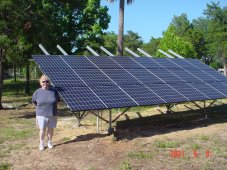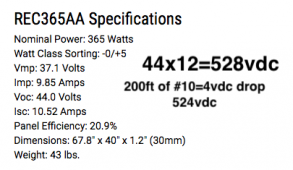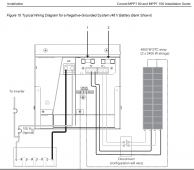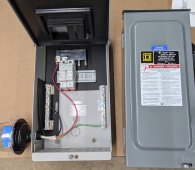Wife & I finished placing the 12 PV panels today!

Next week I’ll go pick up the batteries, and we can turn this thing on for the first time.
There is room for 4 more panels on the frame, so we could do 16.
Is the following the correct way to proceed to add 4 more REC 365AA?

Currently have 12 panels in series, about 524vdc @ 9.5A
The charge controller is a Schneider Conext MPPT 100A 600VDC.
It operates from 230 to 550vdc.
So I can’t put any more in series, or voltage will be too high for the CC.
Adding 4 panels, I could split into two strings of 8 series.
That would provide two series strings of 352vdc, 19A, connected in parallel.
5840 watts.
Is this the best way to use 16 of these panels?
Thanks,
pvdude

Next week I’ll go pick up the batteries, and we can turn this thing on for the first time.
There is room for 4 more panels on the frame, so we could do 16.
Is the following the correct way to proceed to add 4 more REC 365AA?

Currently have 12 panels in series, about 524vdc @ 9.5A
The charge controller is a Schneider Conext MPPT 100A 600VDC.
It operates from 230 to 550vdc.
So I can’t put any more in series, or voltage will be too high for the CC.
Adding 4 panels, I could split into two strings of 8 series.
That would provide two series strings of 352vdc, 19A, connected in parallel.
5840 watts.
Is this the best way to use 16 of these panels?
Thanks,
pvdude




